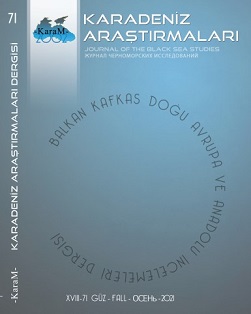Komana Örneği Üzerinden Anadolu Selçuklu Dönemi Kırım Seramik Ticareti ve Usta Göç Hareketliliği
Crimean Ceramic Trade During the Anatolian Seljuk Period and the Craftsmen Migration Mobility on the Example of Komana
Author(s): Yunus Emre KarasuSubject(s): Business Economy / Management, Regional Geography, Migration Studies, Socio-Economic Research, Asylum, Refugees, Migration as Policy-fields
Published by: Karadeniz Araştırmaları Merkezi
Keywords: Ceramic; Anatolia Seljuks; Crafter; Medieval; Crimea;
Summary/Abstract: People use ceramic means of storage, as means of serving food, and as ornamentation. Ceramics can include bowls, plates, cubes, and jugs (just to name a few objects) and they reflect on daily life, socio-economic structure, trade, and cultural interaction in a given region. Ceramic masters – who teach their craft via apprenticeship – interact with the region they happen to be located, as well as with as their cultural background. The Seljuks of Anatolia had conducted many conquest, established many a new city, and transformed many an underdeveloped region. They also put up a struggle against Byzantium, but nevertheless succeeded in migrating wherever they conquered. The Ahi community – known for its ceramic masters – ensured that the everyday needs of the people were met. Moreover, they specialized in making ceramics for daily life and trade. They migrated throughout different parts of Anatolia in accordance with Seljuk conquest and trade routes. This study will look at why they migrated – and in particular to Crimea, after collapse of the Seljuk state.
Journal: Karadeniz Araştırmaları
- Issue Year: 2021
- Issue No: 71
- Page Range: 717-733
- Page Count: 17
- Language: Turkish

